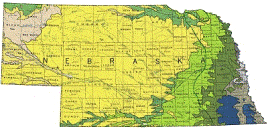US Geological Survey
Document Type
Article
Date of this Version
2009
Citation
Ecotoxicology (2009) 18:773–783
Abstract
The field of wildlife toxicology can be traced to
the late nineteenth and early twentieth centuries. Initial
reports included unintentional poisoning of birds from
ingestion of spent lead shot and predator control agents,
alkali poisoning of waterbirds, and die-offs from maritime
oil spills. With the advent of synthetic pesticides in the
1930s and 1940s, effects of DDT and other pesticides were
investigated in free-ranging and captive wildlife. In
response to research findings in the US and UK, and the
publication of Silent Spring in 1962, public debate on the
hazards of pollutants arose and national contaminant
monitoring programs were initiated. Shortly thereafter,
population-level effects of DDT on raptorial and fish-eating
birds were documented, and effects on other species
(e.g., bats) were suspected. Realization of the global nature
of organochlorine pesticide contamination, and the discovery
of PCBs in environmental samples, launched longrange
studies in birds and mammals. With the birth of
ecotoxicology in 1969 and the establishment of the Society
of Environmental Toxicology and Chemistry in 1979, an
international infrastructure began to emerge. In the 1980s,
heavy metal pollution related to mining and smelting,
agrichemical practices and non-target effects, selenium
toxicosis, and disasters such as Chernobyl and the Exxon
Valdez dominated the field. Biomarker development,
endocrine disruption, population modeling, and studies
with amphibians and reptiles were major issues of the 1990s. With the turn of the century, there was interest in
new and emerging compounds (pharmaceuticals, flame
retardants, surfactants), and potential population-level
effects of some compounds. Based upon its history, wildlife
toxicology is driven by chemical use and misuse,
ecological disasters, and pollution-related events affecting
humans. Current challenges include the need to more
thoroughly estimate and predict exposure and effects of
chemical-related anthropogenic activities on wildlife and
their supporting habitat.
Included in
Geology Commons, Oceanography and Atmospheric Sciences and Meteorology Commons, Other Earth Sciences Commons, Other Environmental Sciences Commons


Comments
U.S. Government Work